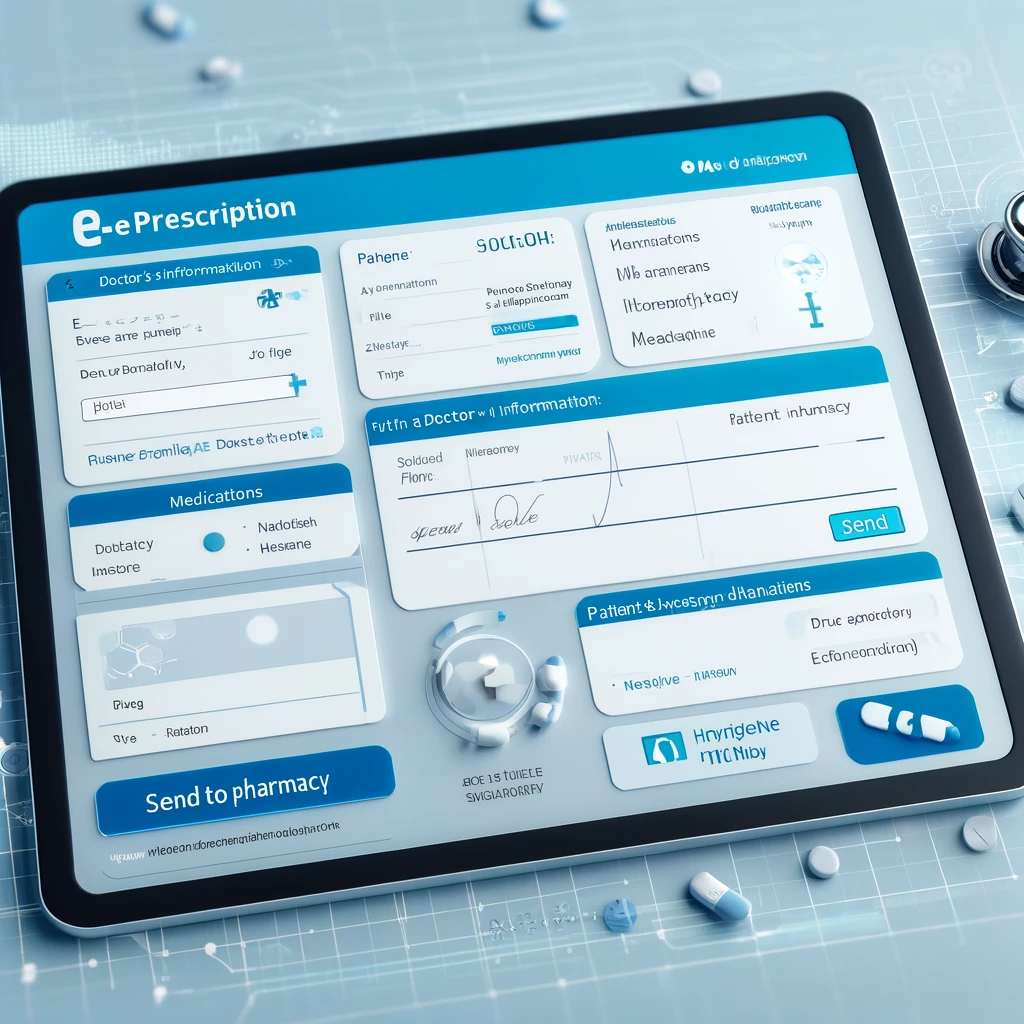Table of Contents
As healthcare shifts into the digital age, one of the most impactful changes is the rise of e-prescriptions. This innovation is more than just a replacement for handwritten prescriptions—it’s revolutionizing the way doctors, patients, and pharmacists manage medication.
Let’s explore why e-prescriptions are not just a trend but a vital component of future healthcare.
What Are E-Prescriptions?
An e-prescription (electronic prescription) is a digital document created by healthcare providers that directly transmits medication orders to pharmacies. Gone are the days when doctors scribbled notes on paper pads, leaving pharmacists to decipher the sometimes illegible instructions.
E-prescribing not only makes the process faster but also drastically reduces errors, improves patient safety, and makes managing medications easier for everyone involved.
Example: MDToolbox E-Prescribing System
MDToolbox is an advanced e-prescribing software solution that simplifies the process for healthcare providers. With its intuitive interface, healthcare providers can create and send prescriptions electronically within seconds, integrating seamlessly with most Electronic Health Record (EHR) systems.
MDToolbox also incorporates real-time safety alerts for drug interactions and allergies, ensuring that prescriptions are safe before reaching the pharmacy.
Additionally, MDToolbox supports Electronic Prescribing of Controlled Substances (EPCS), offering a higher level of security and compliance for controlled medications.

Why E-Prescriptions Are a Game-Changer
1. Improving Patient Safety
Mistakes in prescribing or dispensing medications have been a long-standing problem in healthcare. Illegible handwriting, miscommunication, and manual data entry errors can lead to dangerous medication mistakes. Electronic prescriptions eliminate these risks by providing clear, typed instructions that are transmitted electronically to the pharmacy.
Additionally, the integration of drug interaction checks ensures that potential conflicts between medications are flagged immediately, further enhancing patient safety.
2. Speed and Convenience
In the traditional model, patients would have to visit a doctor, receive a paper prescription, and then take it to a pharmacy. With Electronic prescriptions, the process becomes seamless.
A doctor can send the prescription directly to a pharmacy in real-time, meaning that by the time the patient arrives at the pharmacy, the medication is often ready for pick-up. This convenience is especially valuable for patients managing chronic conditions who require frequent medication refills.
3. Enhanced Medication Adherence
One of the biggest challenges in healthcare is ensuring that patients take their prescribed medications as directed. Electronic prescriptions play a crucial role in improving medication adherence.
With features like automatic refill reminders and the ability for pharmacists to send alerts to both doctors and patients when prescriptions are not picked up, patients are more likely to follow through with their treatment plans.
4. Integration with Electronic Health Records (EHRs)
Electronic prescriptions are often integrated with Electronic Health Records (EHRs), giving doctors a comprehensive view of a patient’s medical history. This enables more informed decision-making, as physicians can easily review past medications, drug allergies, and potential interactions.
By having everything in one digital system, healthcare providers can offer more personalized and precise treatments.
5. Streamlining the Workflow for Healthcare Providers
E-prescriptions simplify the daily workflow for healthcare providers. Instead of dealing with phone calls from pharmacies to clarify handwriting or medication choices, doctors can focus on patient care. This level of automation saves time and reduces the burden of administrative tasks.
The Role of E-Prescriptions in Managing Controlled Substances
In the past, controlled substances were particularly challenging to manage due to strict regulations. E-prescriptions have changed the game, with systems like Electronic Prescribing of Controlled Substances (EPCS) ensuring that controlled medications are prescribed securely.
These platforms require dual authentication for prescribers, providing a higher level of security and reducing the risk of prescription fraud or abuse.
Challenges and Considerations
Despite the numerous advantages, there are some challenges that healthcare systems and providers must address when implementing e-prescriptions.
- Privacy and Security: Since e-prescriptions involve sensitive patient data, it is crucial to ensure that the digital systems used comply with privacy regulations like HIPAA. Data breaches or unauthorized access can have serious consequences.
- Training and Adoption: For some healthcare providers, especially those in smaller practices or rural areas, the transition to e-prescriptions requires investment in new technologies and training. Ensuring that all stakeholders—doctors, pharmacists, and patients—are comfortable using the system is key to a smooth adoption.
- System Downtime: No system is infallible, and technical issues such as connectivity problems or software malfunctions can temporarily disrupt the e-prescription process. Having backup systems in place can help minimize these disruptions.
Looking to the Future: What’s Next for E-Prescriptions?
E-prescriptions are just the beginning of the digital transformation in healthcare. As technology continues to evolve, the potential for innovations like telemedicine, AI-driven diagnostics, and wearable health devices could further integrate with e-prescription systems.
For instance, imagine a future where your smartwatch monitors your vital signs, detects a potential health issue and a doctor sends an e-prescription directly to your pharmacy—all within minutes.
These digital transformations are already enabling new medication delivery methods, as seen with semaglutide tablets and other treatments that can be prescribed and managed entirely through telehealth platforms.
Moreover, with the increasing use of machine learning and big data in healthcare, e-prescriptions could play a vital role in personalized medicine. Doctors could prescribe treatments based on a patient’s genetic makeup, lifestyle, and real-time health data, tailoring interventions more effectively than ever before.
Conclusion: The New Normal in Healthcare
The adoption of e-prescriptions marks a significant milestone in modern healthcare, bridging the gap between medical providers and pharmacies with greater efficiency and accuracy.
As the world continues to embrace digital tools in every sector, e-prescriptions are well on their way to becoming the new normal. Their benefits, from improved patient safety to streamlined workflows, make them an essential part of the future of medicine.
For doctors, pharmacists, and patients alike, the move toward e-prescriptions is a step toward better, faster, and more reliable healthcare delivery.





